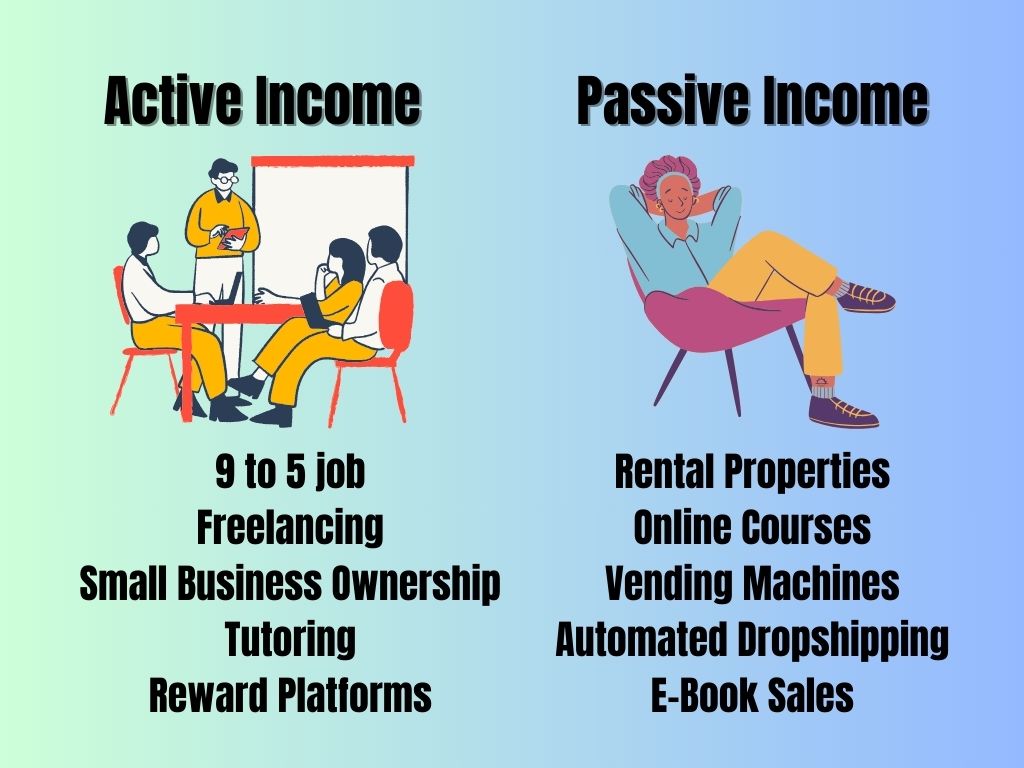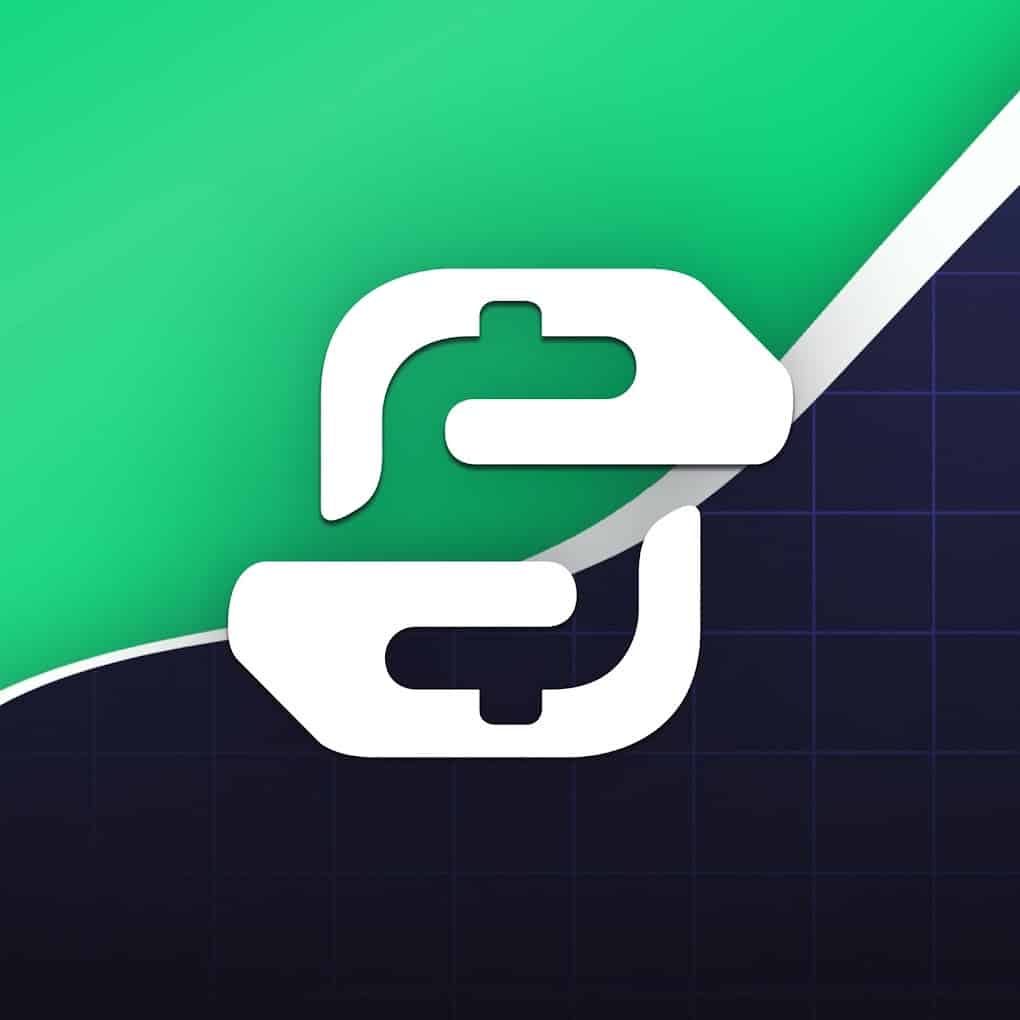What is Active Income?
Active income is essentially the money you earn in exchange for your efforts and time. It’s the paycheck from your day job, the income from your bustling bakery, or the payments from freelance projects. The defining feature of active income is its direct correlation with the amount of work you put in. In layman’s terms, no work means no pay.
This form of income is what most people rely on for their daily expenses and overall financial stability. It’s predictable to a certain extent, as long as you maintain your job or business operations. However, it’s also bound by the limits of time—there are only so many hours in a day you can work.
What is Passive Income?
Passive income, on the other hand, operates on the premise of making your money work for you. It involves initial investment, either of money or time, but once set up, it requires minimal active effort to maintain. Examples include rental income from a property, dividends from stocks, or earnings from a book you’ve written.
The allure of passive income lies in its potential to provide a steady cash flow without a proportional increase in daily labor. While it may take time and patience to build, the payoff is the freedom and flexibility it offers, allowing you to earn even when you’re not actively working.
Difference Between Active and Passive Income
The key difference between active and passive income lies in how they use our time, their reliability, and their growth opportunities. Active income keeps us busy, offering a steady flow of money that's comforting but might not soar to new heights due to work hours and salary boundaries. On the flip side, passive income asks for some elbow grease upfront and might fluctuate more, yet it dangles the carrot of potentially booming earnings without extra hustle. Moreover, when it comes to taxes, passive income can often lead the way with more benefits. So, whether you're clocking in hours or investing upfront, understanding these nuances can make a world of difference in how your financial garden grows.
Tax Impacts: Active income usually faces higher taxation rates since it's often perceived as earned income. However, passive income might benefit from more advantageous tax treatments, depending on the investment type and the investor's country of residence.
Examples of Active And Passive Income
Active income is money earned from activities that require your direct participation and effort. It's like rolling up your sleeves and getting paid for the work you do, whether it's slinging coffee at the local café or typing away in an office cubicle. Here are five common examples:
- 9 to 5 Job: The classic example of active income. You work set hours at a company and receive a steady paycheck for your time and expertise. It's the security blanket for many since you know when and how much you'll get paid.
- Freelancing: Got a skill like writing or graphic design? You can offer your services to clients. You're the boss but you do need to hunt for your next gig. The more you work, the more you earn, giving you the flexibility to choose your workload.
- Small Business Ownership: Whether it's running a trendy boutique or a bustling food truck, owning a small business is a hands-on way to generate income. It can be rewarding, but it also demands plenty of attention and effort.
- Tutoring: Share your knowledge of math, science, or playing the piano with students. You’re swapping your know-how for cash, usually hourly, and helping someone else grow in the process.
- Reward Platforms: Platforms like Freecash are a modern twist on making active income. Essentially, you complete simple online tasks such as filling out surveys, trying new apps, or playing games, and you get rewarded with money (or other rewards). It's like a side hustle that you can do anywhere, any time.
Passive income, in contrast, is more about setting things up and letting the money flow in, with little ongoing effort from your end. Imagine planting a garden – you do the upfront work, and then you sit back and watch it grow, harvesting the fruits (or veggies) of your labor. Let's look at five ways you might earn passive income:
- Rental Properties: If you own extra real estate, you can rent it out and collect rent. It's an investment that requires some upfront effort in terms of maintenance and finding trustworthy tenants but can provide consistent income over time.
- Online Courses: Are you an expert in something? Create an online course once, and then sit back as students enroll over and over again. Platforms like Udemy or Teachable make it easy to reach learners and collect earnings.
- Vending Machines: Believe it or not, owning vending machines can be a source of passive income. You'll need to restock and maintain them, but they can earn money around the clock when placed in high-traffic areas.
- Automated Dropshipping: Start an online store where you sell products but never touch the inventory yourself. When someone buys an item, the order is sent directly to the supplier, who ships it to the customer. Your role is to manage the online storefront and customer service.
- E-Book Sales: Maybe you're full of stories or have specialized knowledge on a topic. Write an e-book, self-publish it online, and whenever someone purchases it, you make money without having to print or ship a thing!

How To Successfully Combine Active and Passive Income?
Blending active and passive income is like having a diversified diet – it's all about balance and ensuring you're getting the most out of your efforts. Let's say you're a graphic designer by day (active income), investing your skills into projects that require your direct input. To complement this, you might create and sell digital templates or assets online (passive income), which people can buy and download anytime, turning every ping of a sale into a little celebration.
Or perhaps you're a fitness instructor, energetically leading classes and personal training sessions (active income). You could record a series of workout videos or write a guide on nutrition and fitness, selling access to these resources on platforms like Patreon, social media, or your website (passive income). This way, while you're pumping up a live class or enjoying some well-deserved rest, your digital content is out there working for you, spreading your expertise and pulling in extra income.
These scenarios show that no matter your passion or profession, there's an opportunity to craft a blend of active and passive income. No matter what you do, you can always sign up on Freecash and supplement your income easily, by completing various online tasks. This is one of the most effortless ways to earn extra income, even though it’s active.
Which One is Better for You? Active or Passive Income
Deciding whether active or passive income better suits your financial needs depends on your current situation, future goals, and personal preferences. If you seek immediate stability and predictable earnings to meet daily expenses, active income may be more aligned with your needs. It offers a straightforward exchange of time for money, providing regular cash flow for those willing to put in the work.
However, if you're aiming for financial freedom, long-term wealth, and the ability to earn without trading your time directly for money, passive income could be the better path. It requires upfront investment and patience but has the potential to grow significantly over time, offering a way to accumulate wealth while freeing up your schedule.
Ultimately, the most robust financial strategy incorporates a blend of both active and passive income streams. This approach combines the stability and predictability of active income with the growth potential and freedom of passive income. It's about finding the right balance that aligns with your financial goals, lifestyle aspirations, and the level of effort you're willing to invest.
| Aspect | Active income | Passive income |
| Definition | Earnings from work or business activities in which you actively participate. | Income is generated with minimal ongoing effort, often from investments or assets. |
| Examples | Salaries, wages, commissions, tips, freelance income. | Rental property income, dividends, interest, royalties, and income from business investments not requiring direct involvement. |
| Pros | Immediate and predictable cash flow Increases with career growth or business expansion Easier to start; no large initial capital is required in most cases Provides structure and routine to lifestyle | Potential for earning without time limitations, 24/7 income generation Scalable, with potential for exponential growth More favorable tax treatment in many cases Can lead to financial independence and freedom |
| Cons | Tied to time; limited by the hours you can work Income stops if you stop working Typically higher tax rates Work-related stress and time commitment | Requires upfront investment of time, money, or both Income may be irregular, especially in the early stages Requires knowledge, research, and risk management Higher upfront costs or barriers to entry |
In Summary
Active and passive income, the dynamic duo of your finances, each plays a crucial role in building a robust financial plan. Combining these income streams can not only secure your financial footing but also set the stage for accumulating wealth and achieving the freedom you dream of. The familiarity and stability of active income provide a solid foundation, while the growth possibilities and adaptability offered by passive income are captivating in their own right.
As you navigate the world of fiscal wisdom and empowerment, grasping the unique characteristics of active and passive income can be a game-changer in realizing your financial aspirations. So, here's a toast to a financially prosperous future where your money works as diligently for you as you do for it.




